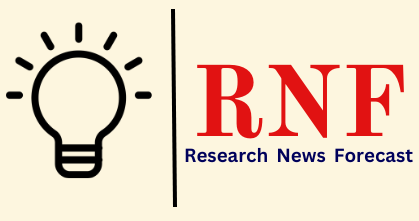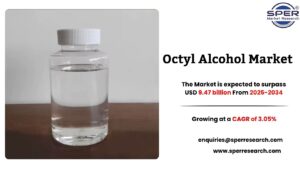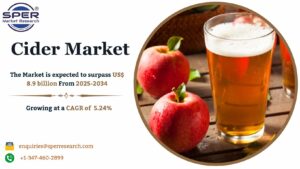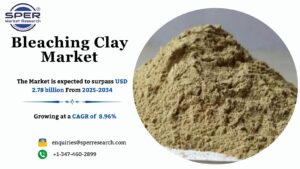Bleaching Clay Market Size, Share and Growth 2034
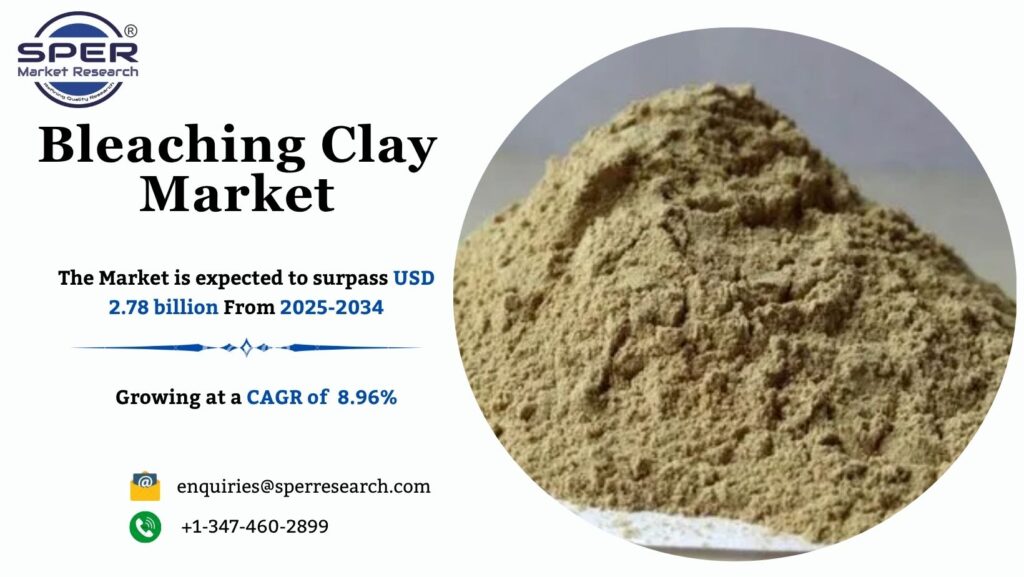
Bleaching clay is a naturally occurring clay substance primarily made up of minerals such as sepiolite, attapulgite, and montmorillonite. It undergoes processing that entails drying, crushing, and acid activation to improve its adsorbent characteristics. Bleaching clay finds extensive application in the refining of vegetable oils and lubricants, detoxifying beverages, purifying gas and petroleum, operating water treatment plants, facilitating environmental remediation, manufacturing rubber and plastics, and serving as an additive in animal feed. It provides high adsorption capacity, cost efficiency, versatility, and effectiveness in the removal of color and impurities. Additionally, it is readily available, recyclable, and non-toxic, which ensures sustainability and compatibility with various industrial processes.
According to SPER market research, ‘Global Bleaching Clay Market Size- By Product, By Application – Regional Outlook, Competitive Strategies and Segment Forecast to 2034’ state that the Global Bleaching Clay Market is predicted to reach 2.78 billion by 2034 with a CAGR of 8.96%.
Drivers:
The increasing adoption of refined food products and consumables that require bleaching clay is driving market growth. Coupled with this is the rising demand for pure, toxin-free food products, driven by heightened health awareness among consumers, which is further propelling the growth of the market. Additionally, market expansion is being supported by continuous technological advancements in bleaching clay technology that result in increased efficiency and higher product quality. Furthermore, the introduction of favorable policies by numerous governments aimed at promoting the use of eco-friendly and sustainable materials in industrial processes is aiding market growth.
Request a Free Sample Report: https://www.sperresearch.com/report-store/bleaching-clay-market?sample=1
Restraints:
Price fluctuations and raw material shortages provide serious obstacles to the market’s growth for bleaching clay. In addition, the substantial financial investment required for research and development, along with the establishment of new manufacturing facilities for bleaching clay products such as mineral clays, attapulgite, bentonite, sepiolite, and others, further curtails the growth rate of the bleaching clay market. Collectively, these issues may impede the bleaching clay market’s growth over the forecast period. In 2024, North America led the global bleaching clay market. This dominance can be ascribed to a combination of factors, including the region’s strong industrial infrastructure, particularly in industries such as food and beverage, cosmetics, and chemicals, which are significant consumers of bleaching clay for the purification of oils and fats. This demand is further stimulated by North America’s strict quality standards and regulations, which encourage industries to prioritize the utilization of high-quality bleaching clays to comply with safety requirements and ensure product integrity. Some of the key market players Taiko Group of Companies, Clariant AG, Ashapura Perfoclay Ltd. (APL), Oil Dri Corporation of America, and others.
For More Information, refer to below link: –
Related Reports:
Follow Us –
LinkedIn | Instagram | Facebook | Twitter
Contact Us:
Sara Lopes, Business Consultant — USA
SPER Market Research
enquiries@sperresearch.com
+1–347–460–2899
